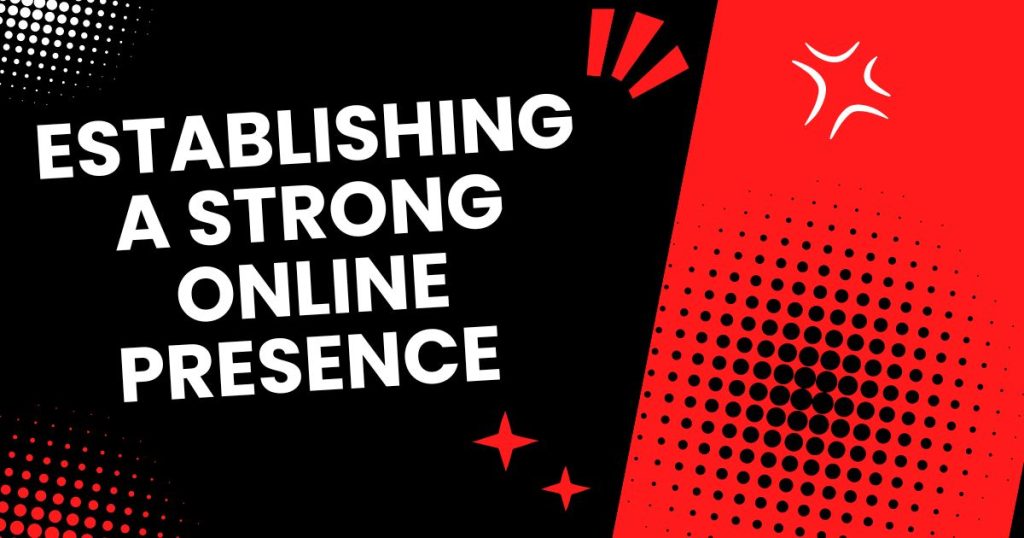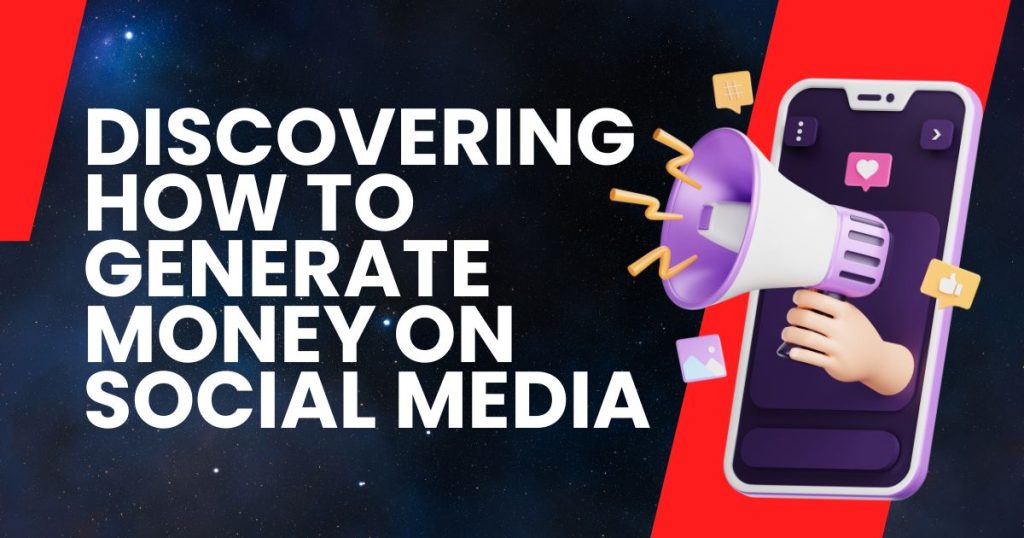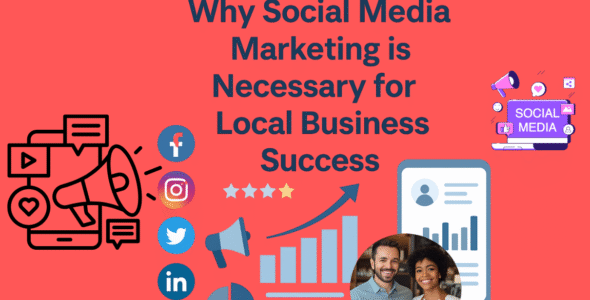Social media marketing is the process of making money on different social sites by using their special features and the ability to connect audiences. Affiliate marketing, sponsored content, and direct sales are some of the most important methods. Affiliate marketing pays users to promote goods in exchange for fees. Sponsored content pays influencers to write posts about brands’ products.
Platforms like Facebook, Instagram, TikTok, and YouTube offer unique income possibilities such as ad revenue, paid posts, and in-app sales. To make money, you need to build a strong, active following, make high-quality content that speaks to your audience, and use analytics to make your plans even better. Both people and companies can make a lot of money and build a strong social media footprint by using these platforms wisely and using a variety of ways to make money.
Learning How to Make Money on Social Media
Social media marketing is the process of making money on different social sites by using their features and user interaction to your advantage. This process includes several strategies:
Affiliate marketing is when you promote a business or product and get paid a fee for sales that come from referral links. For this method to work, you need to make content that is useful and makes people want to buy.
- Sponsored Content: Collaborating with brands to make and share stories that promote their goods or services. This usually includes getting payment or other benefits in exchange for featuring the brand in your work.
- Selling Products or Services: Utilizing social media sites to directly sell your own products or services. This can be done through integrated shopping features or by sending fans to an external e-commerce site.
- Advertising Revenue: Earning money from ads presented on platforms like YouTube or TikTok, where artists receive a share of revenue based on views and activity.
Effective marketing requires building a strong, involved following, providing high-quality content, and deploying platform-specific tools and data to improve performance and income potential.

Establishing a Strong Online Presence
Creating a strong online profile is crucial for leveraging social media successfully and achieving your revenue goals. Here’s how to build a strong internet footprint:
- Define Your Brand Identity: Develop a clear and appealing brand identity that shows your beliefs, goal, and unique selling offer. This includes picking a uniform color scheme, image, and tone of voice that connects with your target audience.
- Optimize Your Accounts: Ensure your social media accounts are fully optimized. Use high-quality personal and cover photos, write interesting stories, and include relevant keywords that make it easy for users to find you. Include links to your website or other sites where people can learn more about you or your business.
- Create High-Quality material: Focus on providing material that is useful, important, and interesting to your audience. This can include a mix of posts, movies, images, and stories that fit with your brand’s message and goals.
- Engage Consistently: Actively connect with your fans by replying to comments, messages, and notes. Engage in talks, ask for feedback, and join in important topics to create a sense of community and build strong relationships with your audience.
- Monitor Analytics: Utilize analytics tools offered by social media sites to track your success. Analyze response rates, friend growth, and other key measures to understand what works and make data-driven choices to improve your strategy.
By focusing on these aspects, you can create a strong online presence that attracts and keeps fans, eventually setting the stage for successful monetization efforts.
Developing a Brand Identity
Creating a distinctive and memorable image that embodies your values, objectives, and special traits is the first step in creating a brand identity. Start by outlining the message you want to convey to your community and the fundamental principles of your brand. Select a visually attractive picture, color scheme, and typeface that appeals to your target audience and aligns with the mindset of your brand.
Create a consistent tone of voice and an interesting brand narrative that work across all media. To project a unified and expert image, your website, marketing materials, and social media profiles should all reflect your brand identity.
Maintaining a consistent brand makes it simpler for your audience to relate to and remember you by fostering recognition and trust. Maintaining a consistent brand identity can help you stand out from the competition and leave a lasting impression.

Building an Engaged Audience
To use social media effectively and accomplish your professional or personal objectives, you must have an engaged audience. Create excellent, practical content that appeals to your target audience first. This content, which may include helpful blogs, captivating videos, and eye-catching images, should speak to their interests, desires, and problems.
To keep your audience engaged and informed, create a content strategy and publish often. Consistency is essential. Engage your followers in conversation by responding to their notes, messages, and comments. To foster a feeling of community, start conversations, pose queries, and provide interesting content like surveys or quizzes. Utilize tracking tools to observe interaction data and choose the most effective content.
Adapt your strategy in light of this information to maintain relevance and continuously enhance your strategy. Although it requires constant effort and reaction, developing an engaged audience ultimately results in stronger bonds and increased loyalty.
How can I generate money quickly with social media?
Social media marketing is the process of making money on different social sites by using their special features and the ability to connect audiences. Affiliate marketing, sponsored content, and direct sales are some of the most important methods. Affiliate marketing pays users to promote goods in exchange for fees. Sponsored content pays influencers to write posts about brands’ products.
Platforms like Facebook, Instagram, TikTok, and YouTube offer unique income possibilities such as ad revenue, paid posts, and in-app sales. To make money, you need to build a strong, active following, make high-quality content that speaks to your audience, and use analytics to make your plans even better. Both people and companies can make a lot of money and build a strong social footprint by using these platforms wisely and using a variety of ways to make money.

Discovering How to Generate Money on Social Media
Social media marketing is the process of making money on different media sites by using their features and user interaction to your advantage. This process includes several strategies:
Affiliate marketing is when you promote a business or product and get paid a fee for sales that come from referral links. For this method to work, you need to make content that is useful and makes people want to buy.
- Sponsored Content: Collaborating with brands to make and share stories that push their goods or services. This usually includes getting payment or other benefits in exchange for featuring the brand in your work.
- Selling Products or Services: Utilizing social media sites to directly sell your own products or services. This can be done through integrated shopping features or by sending fans to an external e-commerce site.
- Advertising Revenue: Earning money from ads presented on platforms like YouTube or TikTok, where artists receive a share of revenue based on views and activity.
Effective marketing requires building a strong, involved following, providing high-quality content, and deploying platform-specific tools and data to improve performance and income potential.
Establishing a Strong Online Presence
Creating a strong online profile is crucial for leveraging social successfully and achieving your revenue goals. Here’s how to build a strong internet footprint:
- Define Your Brand Identity: Develop a clear and appealing brand identity that shows your beliefs, goal, and unique selling offer. This includes picking a uniform color scheme, image, and tone of voice that connects with your target audience.
- Optimize Your Accounts: Ensure your social accounts are fully optimized. Use high-quality personal and cover photos, write interesting stories, and include relevant keywords that make it easy for users to find you. Include links to your website or other sites where people can learn more about you or your business.
- Create High-Quality material: Focus on providing material that is useful, important, and interesting to your audience. This can include a mix of posts, movies, images, and stories that fit with your brand’s message and goals.
- Engage Consistently: Actively connect with your fans by replying to comments, messages, and notes. Engage in talks, ask for feedback, and join in important topics to create a sense of community and build strong relationships with your audience.
- Monitor Analytics: Utilize analytics tools offered by social sites to track your success. Analyze response rates, friend growth, and other key measures to understand what works and make data-driven choices to improve your strategy.
By focusing on these aspects, you can create a strong online presence that attracts and keeps fans, eventually setting the stage for successful monetization efforts.

Developing a Brand Identity
Developing a brand personality involves making a distinct and memorable picture that reflects your beliefs, goal, and unique qualities. Start by describing your brand’s core ideals and the message you want to send to your community. Choose a visually appealing image, color palette, and font that fits with your brand’s attitude and connects with your target market. Craft an engaging brand story and uniform tone of voice that can be used across all communication platforms.
Your brand personality should be mirrored in your social media accounts, website, and marketing tools to create a cohesive and professional image. Consistent branding helps build recognition and trust, making it easier for your audience to connect with and remember your brand. By keeping a unified brand personality, you can effectively separate yourself from rivals and make a memorable impression.
Building an Engaged Audience
Building an interested audience is important for utilizing social media successfully and achieving your business or personal goals. Start by making high-quality, useful material that connects with your target group. This material should address their hobbies, wants, and pain points, and can include useful posts, interesting videos, and visually appealing pictures. Consistency is key, so build a content plan and post regularly to keep your audience interested and informed.
Actively connect with your fans by replying to comments, messages, and notes. Encourage talks, ask questions, and build engaging material such as polls or tests to promote a sense of community. Use tracking tools to watch interaction data and understand what material works best. Adjust your plan based on this data to continually improve your approach and keep relevance. Building an involved audience takes ongoing work and response, but it eventually leads to better relationships and greater loyalty.

Exploring Monetization Strategies
Exploring business methods includes partner marketing, paid content, direct sales, ad revenue, and accounts to create income from social media.
- Affiliate Marketing: Affiliate marketing involves pushing goods or services and making a fee for every sale made through your advertising links. Choose partner programs that fit with your business and audience interests. Create engaging material that easily includes ad links, such as product reviews, lessons, or comparisons.
- Sponsored Content: Sponsored content is a popular way where brands pay you to make posts that push their goods or services. To draw possible sponsors, showcase your impact by showing your interaction data and viewer demographics. Create a media kit describing your rates, audience insights, and previous projects to present to possible sponsors.
- Selling Products or Services: Selling goods or services directly on media can be highly rewarding. Utilize platforms like Facebook Shops, Instagram Shopping, or LinkedIn Marketplace to promote and sell your goods. Implement effective sales strategies, such as limited-time deals, exclusive prices, and user-generated content, to drive sales.
- Social Media Advertising: Social media advertising allows you to reach a larger audience by putting focused ads on sites like Facebook, Instagram, or LinkedIn. Create engaging ad campaigns that show your unique selling points and include strong calls to action. Monitor ad success and change your plan based on measures such as click-through rates and conversion rates.
Leveraging content strategies involves making high-quality, interesting content suited to your audience, using multimedia, optimizing for SEO, and keeping current with trends to drive interaction and growth.
Creating High-Quality Content
High-quality material is the cornerstone of social media success. Invest in expert photos, interesting movies, and well-written posts to catch your audience’s attention. Tailor your content to each platform’s best practices, such as using Instagram Stories for behind-the-scenes content or LinkedIn Articles for thought leadership.
Utilizing Video Content Video material is growing popular and can significantly improve interaction. Create a mix of live videos, lessons, product samples, and behind-the-scenes clips to connect with your audience. Platforms like TikTok and Instagram Reels are ideal for short-form video content, while YouTube is perfect for longer, more detailed videos.
Implementing SEO Techniques Optimizing your social material for search engines can improve exposure and drive traffic. Use important terms in your posts, comments, and hashtags. Incorporate popular topics and search terms to improve your content’s usefulness. Regularly update your material to keep it new and matched with current trends.

Analyzing Performance and Optimizing Strategies
Analyzing performance includes watching key measures, performing A/B tests, and changing tactics based on data insights to improve involvement and efficiency of your social media effort.
- Tracking Metrics: Monitoring key performance indicators (KPIs) is important for improving your social plans. Track measures such as response rates, friend increase, click-through rates, and sales rates. Use tracking tools offered by social sites or third-party tools to gain insights into your content’s success.
- A/B Testing: A/B testing includes playing with different content forms, titles and calls to action to determine what connects best with your audience. Implement A/B tests on ads, posts, and promotional material to find the most effective tactics. Analyze the data and apply the lessons to improve your method.
Adjusting Strategies Based on Insights
Continuously improve your tactics based on success data and public comments. Adapt to new trends, tastes, and platform systems to stay current. Regularly update your content plan and change your tactics to match with your audience’s changing wants and interests.
- Networking and Collaborations: Networking and partnerships involve meeting with leaders, brands, and industry workers to grow your impact. Partnering on projects and efforts can improve exposure and trustworthiness.
- Partnering with Influencers: Collaborating with leaders can expand your reach and reputation. Identify leaders within your field who have a substantial following and connect with your target group. Propose mutually beneficial relationships, such as paid posts or shared projects, to maximize their impact and drive traffic to your accounts.
Joining Industry Groups and Forums Participate in industry-specific groups and forums to network with like-minded experts and possible clients. Share your knowledge, offer important ideas, and build relationships with key players. Networking within your business can lead to partnership opportunities and improve your exposure.

Conclusion
Generating money quickly with social media requires a planned approach that combines building a strong online profile, exploring various marketing methods, maximizing content, analyzing performance, and networking effectively. By following these tactics, you can maximize your earnings and create a great social media profile.
 My Account
My Account 


